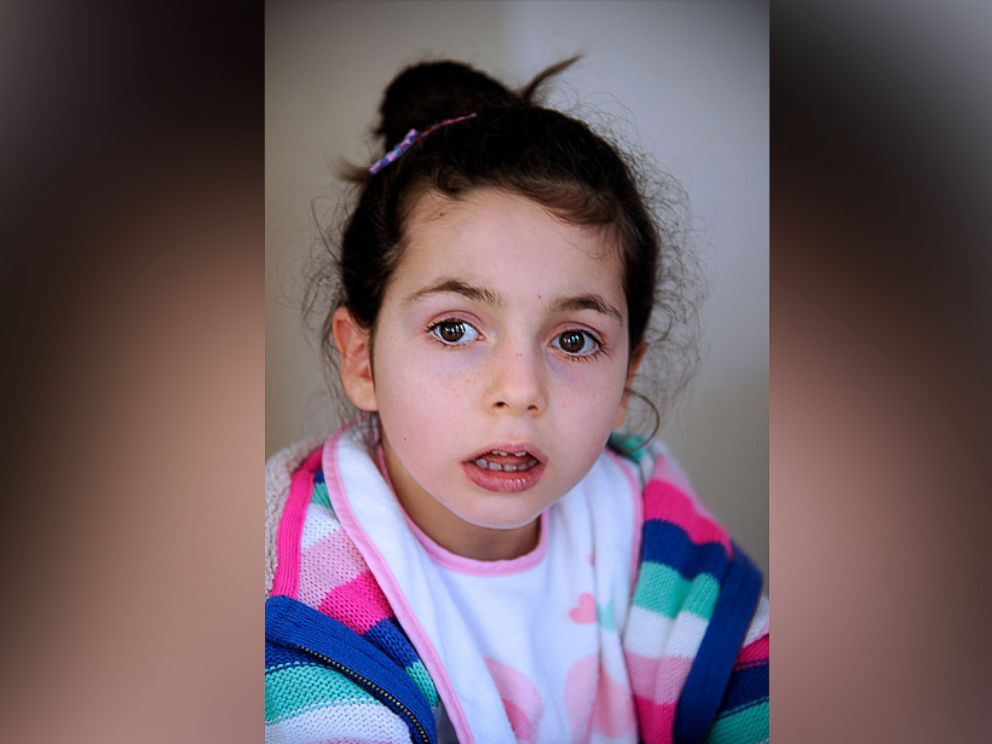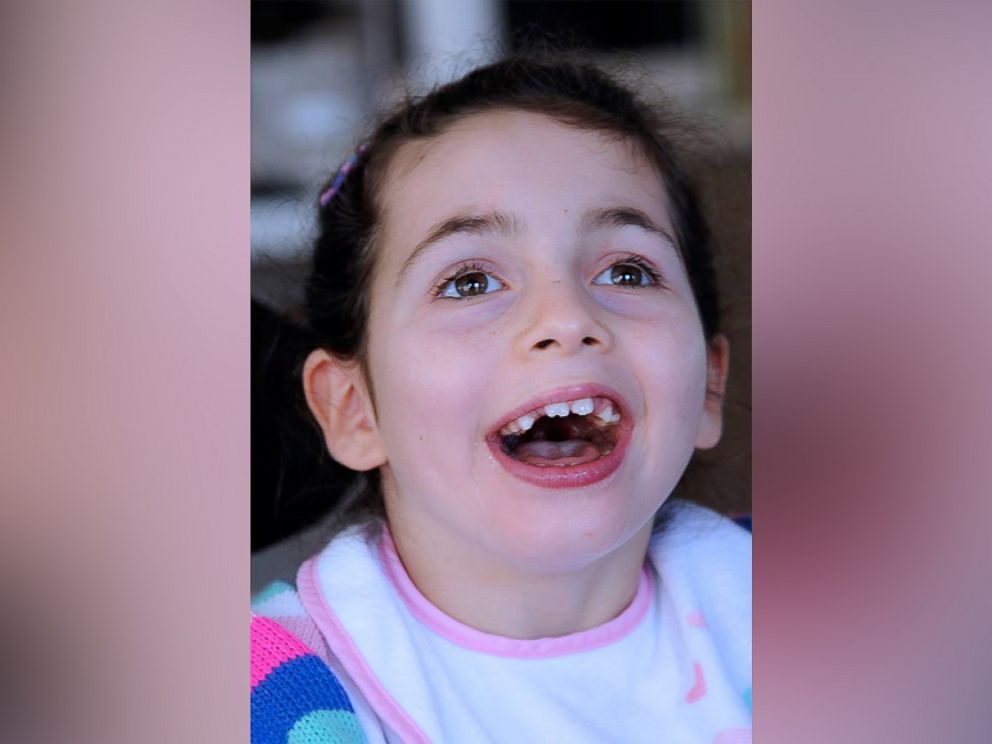Child With Rare Disease That Reverses Development Hasn't Lost Her Smile
Australian girl is one of 10 or 11 worldwide with rare form of Batten's disease.
— -- When Olivia Thurston was born on January 15, 2008, weighing in at 8 pounds and 6 ounces, she was a happy and healthy baby and continued to develop normally in her first years.
But at the age of 3, her progress changed. Her speech was limited and she became increasingly clumsy; she suffered from seizures daily. She continued to regress until, by the age of six, Olivia lost her ability to walk and talk altogether.
After endless testing, doctors finally diagnosed Olivia this June with Late Infantile Battens disease, an incredibly rare and fatal brain disorder that causes children to progressively lose cognitive function and motor skills, suffer from severe epilepsy and can also affect vision.
Olivia is currently the only child in Australia and one of only 10 or 11 in the world with her particular variant of the disease,CLN6. Her family is now working tirelessly to raise funds for her care and awareness of the disorder.
Already severely crippled by the disease, the 8-year-old girl continues to regress, her mother says.
“Every day is another loss. She is slowly going downhill. Three months ago she could sit up on the floor by herself, now she can’t do that,” her mother, Alison Thurston, explains.

Beyond the physical impairments, Olivia suffers from dementia and often experiences frightening hallucinations.
“We try not to dwell on how she used to be, but it is tough because we’ve kind of lost our girl. So we’re grieving every day, really,” her mother says.
In the years before the onset of this disease, Olivia loved anything involving the outdoors. Her favorite activities included riding her bike and playing soccer. “It’s been very hard for her and us that she can’t do any of that anymore,” her mother says.
Though she can no longer play like she used to, Olivia’s mother marvels at one thing she hasn’t lost – her smile.
“She’s such a lovely girl. She can still smile, which is the most amazing,” Alison says. “And she still has such a sense of humor.”
Thurston recalls a moment just a few days ago when she tripped over some toys that had been left on the floor and Olivia immediately burst out in laughter.
“She can’t talk anymore, but some things she still finds quite amusing,” Alison says with a laugh.
One of those things is her relationship with her siblings, especially her younger sister Ruby, who is just one year old.
“They just have a bond that can’t be explained,” Alison says. “They just look at each other and giggle.”
Olivia also has an older half-brother and half-sister, both of whom Alison describes as incredibly supportive.
As Olivia continues to lose function, the family must accommodate their daughter with costly special equipment and renovations to make their home handicap-accessible.
The Thurstons have always done things by themselves, and, even in the case of Olivia, never asked for help, Alison says. But in December of 2015, one of Olivia’s classmates passed away. It was in that moment that Alison decided to share her daughter’s story. “We can’t keep this to ourselves. We should tell everybody and let everybody see Olivia because she’s such a beautiful girl,” she recalls thinking.
This, paired with the financial strain, caused the Thurstons to begin reaching out to the community.

“Everybody needs to ask for help, and that’s what we’re doing,” Alison says.
Both Alison and her husband continue to work full time in order to provide as much as they can for Olivia, while Alison’s mother, who joined the family in Australia from the UK, helps care for her granddaughter at home. The family has also set up a Go Fund Me page and holds fundraisers.
There is currently no cure for Batten’s Disease in any of its forms. The disease is caused by a genetic mutation, explains Dr. Nancy Bass, a pediatric neurologist at UH Rainbow Babies & Children’s Hospital in Cleveland, Ohio and an associate professor of pediatrics at Case Western Reserve University School of Medicine. Researchers have been able to pinpoint the genes responsible for Batten’s, but the next step toward finding a cure —- determining an effective form of gene therapy -– can be a long and difficult process, she says.
Another concern for the Thurston’s is the risk for their youngest daughter, Ruby. Though she is currently in perfect health, the sad reality of Batten’s is that the late infantile variant does not manifest itself until the child is about 2-4 years old.
In order for a child to develop Batten’s Disease, both parents must carry the gene. If the child receives the gene from both parents, they will develop the gene mutation as Olivia has. According to Dr. Bass, Ruby has a 25 percent chance of having Batten’s, a fifty percent chance of being a carrier, and a 25 percent chance of escaping the trait altogether. The Thurstons plan on having Ruby tested soon.
Though there is little they can do to slow the progression of Olivia’s disease, the Thurston family continues doing everything possible to raise awareness and, most importantly, keep Olivia smiling.




